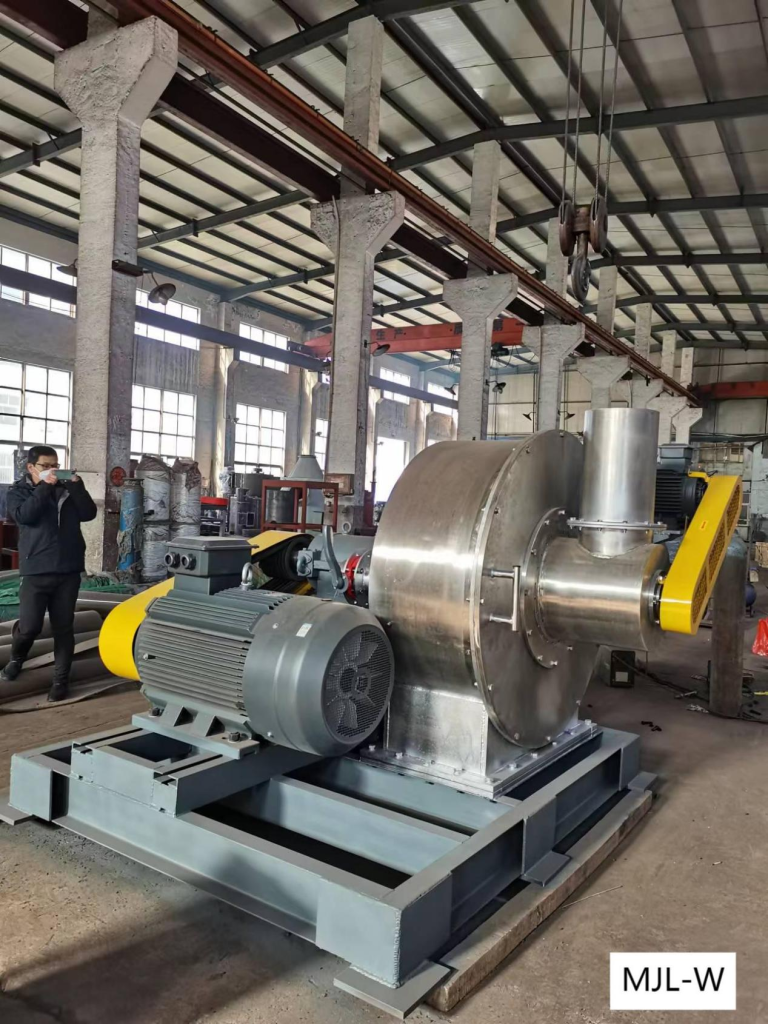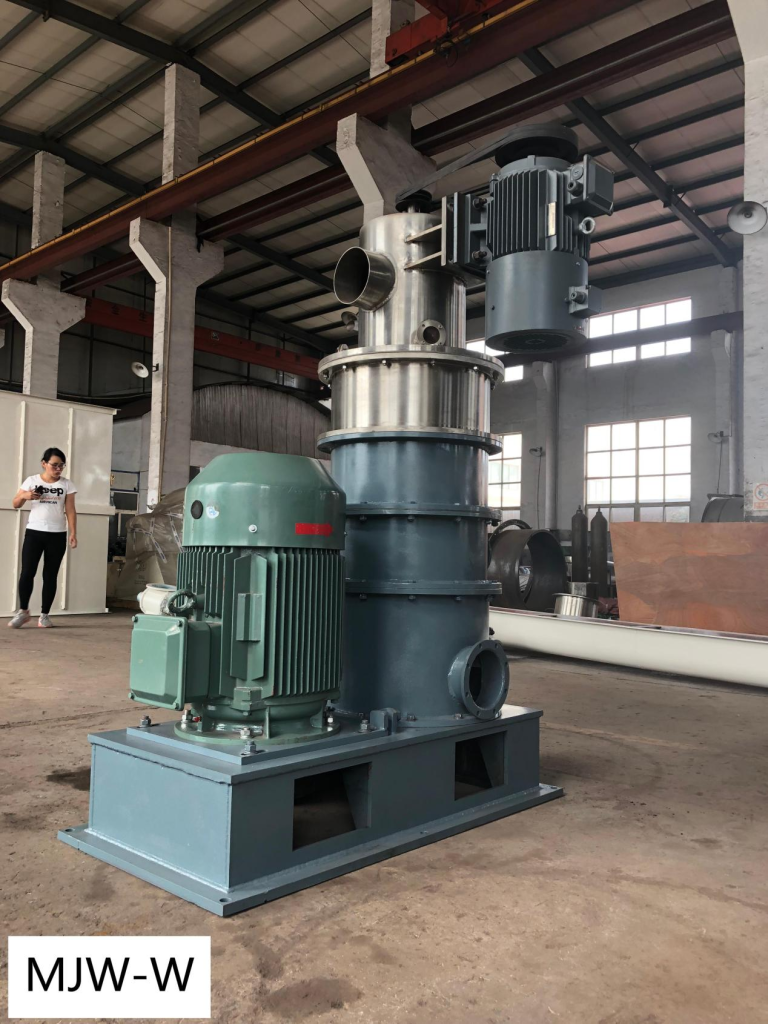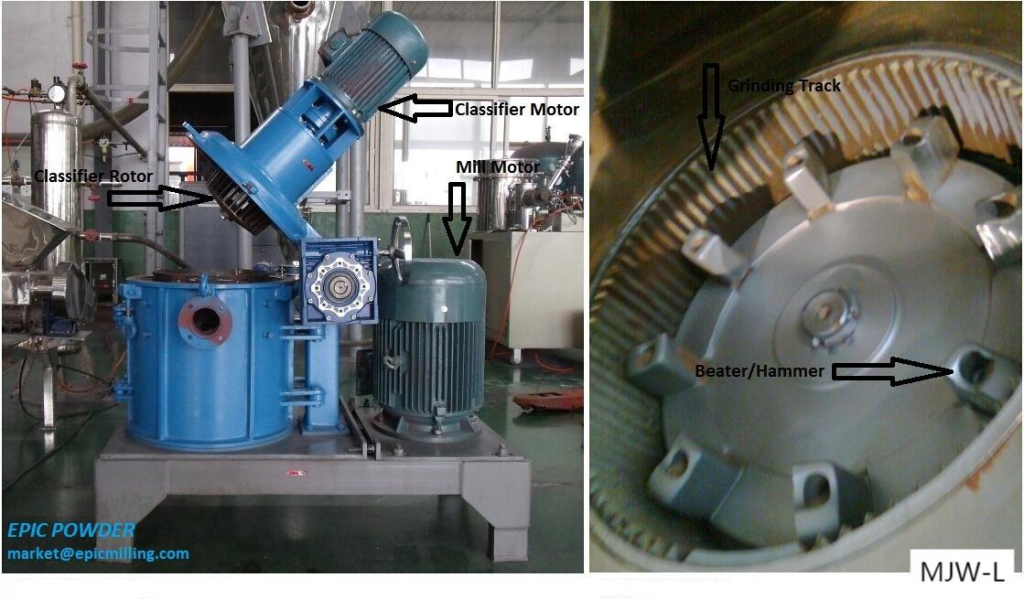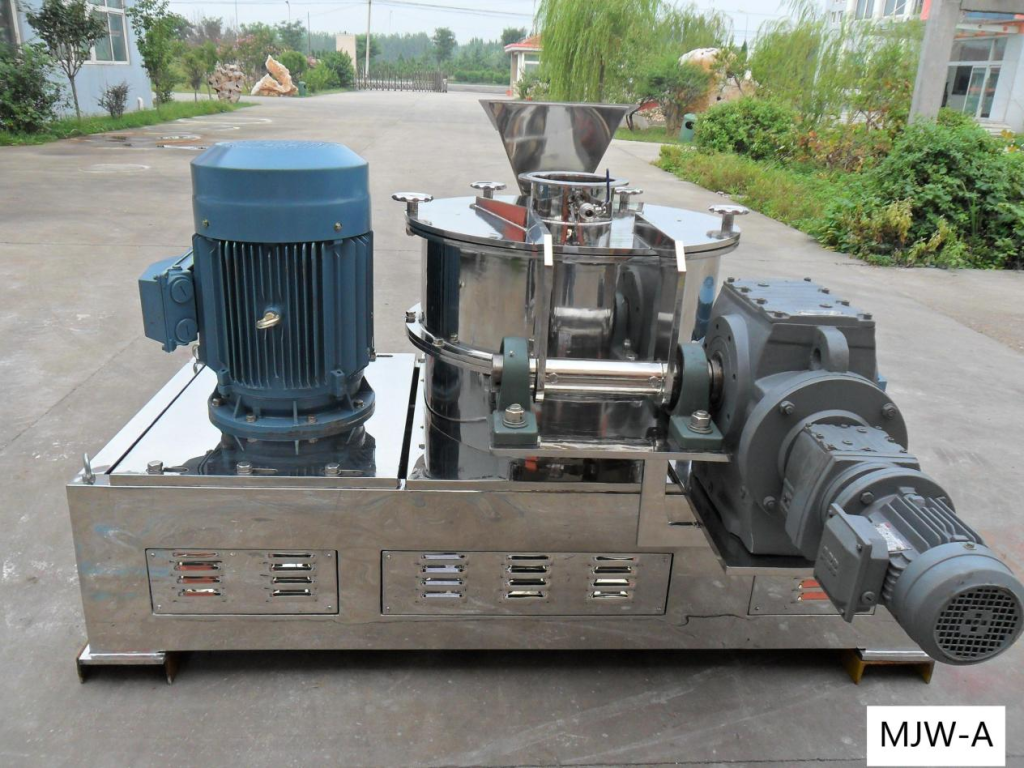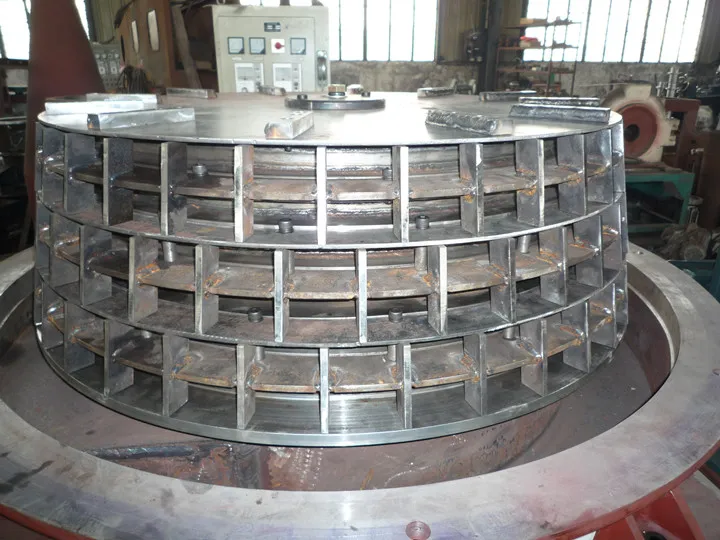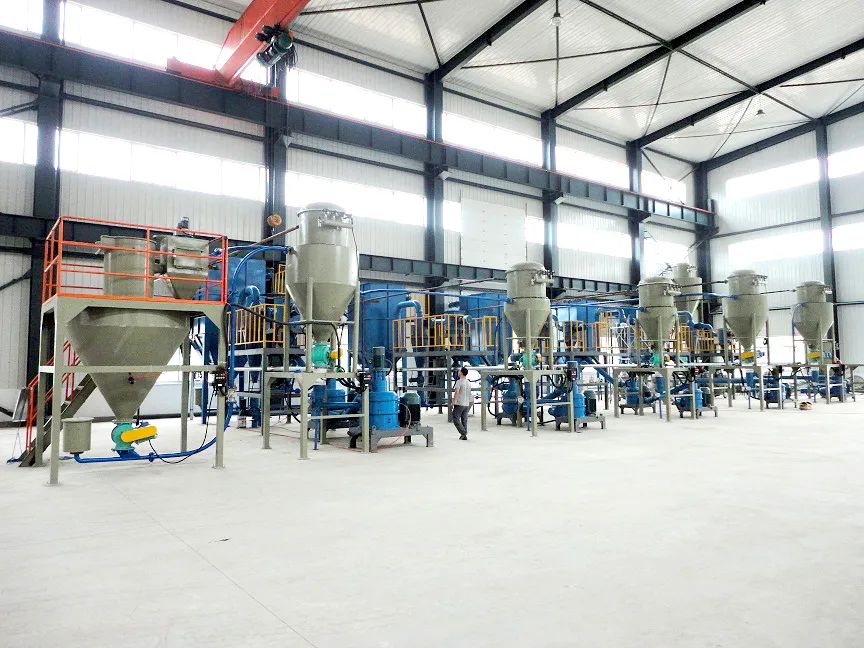El molino clasificador de aire es un dispositivo avanzado que combina equipos para moler y clasificar, puede producir polvos finos con distribuciones de tamaño de partícula específicas para diferentes aplicaciones.
En términos generales, el rendimiento de molino clasificador de aire Está influenciado principalmente por los siguientes factores:
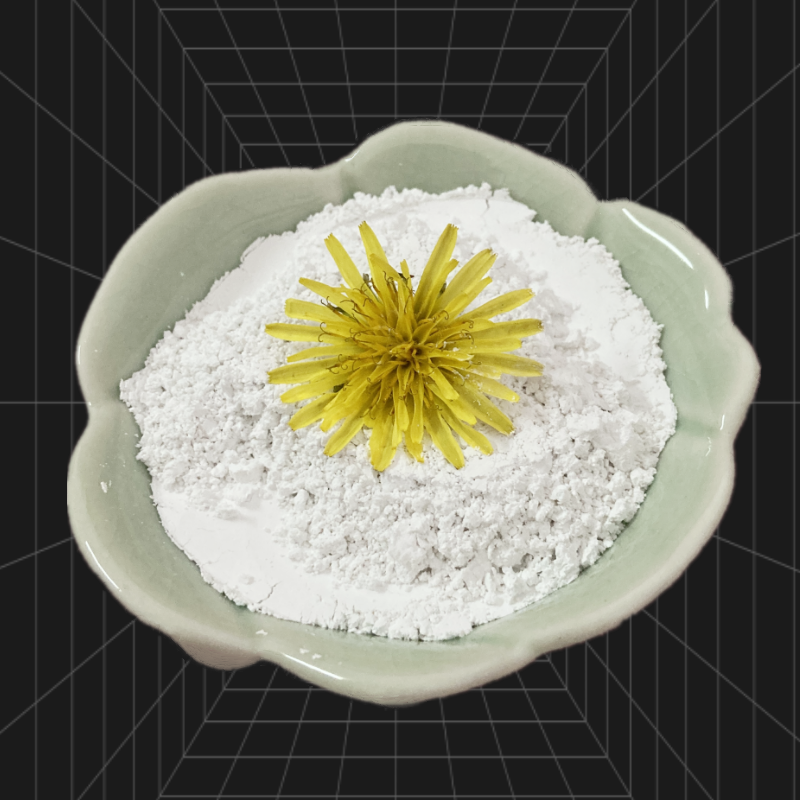
1. Velocidad de la rueda clasificadora
La velocidad de rotación de la rueda clasificadora es un factor crítico que afecta directamente la distribución del tamaño de las partículas. Una velocidad más alta puede aumentar la eficiencia de separación y permitir que se vuelvan a moler partículas más gruesas. Esto puede garantizar que se obtengan partículas más finas. Por el contrario, una reducción de la velocidad daría lugar a productos con partículas más gruesas.
2. Flujo y velocidad del aire
Flujo de aire es esencial para transportar materiales a través del molino. Desempeña un papel importante en la finura final de los productos. Aumentar el flujo de aire puede hacer que las partículas pasen más rápidamente a través de la cámara de molienda, lo que reduciría el tiempo de molienda y el tamaño de las partículas sería grueso en consecuencia. Por el contrario, un flujo de aire menor daría más tiempo de molienda y se obtendrían partículas más finas. Por lo tanto, manteniendo un volumen de flujo de aire constante pero ajustando el flujo de aire, velocidad A través de la rueda clasificadora se puede mejorar el rendimiento de la clasificación.
3. Velocidad de alimentación
La velocidad a la que se introduce el material en el molino afecta significativamente la finura del producto. Aumentar la velocidad de alimentación puede dar como resultado un producto más grueso debido a un tiempo de molienda insuficiente, mientras que disminuir la velocidad de alimentación puede dar como resultado partículas más finas.
4. Velocidad del molino
La velocidad del molino también influye en el rendimiento. Una velocidad más alta del molino puede aumentar las fuerzas de impacto sobre las partículas, con un efecto de molienda más fino. Sin embargo, esta operación debe equilibrarse con otros parámetros operativos para evitar un desgaste excesivo o un sobrecalentamiento.
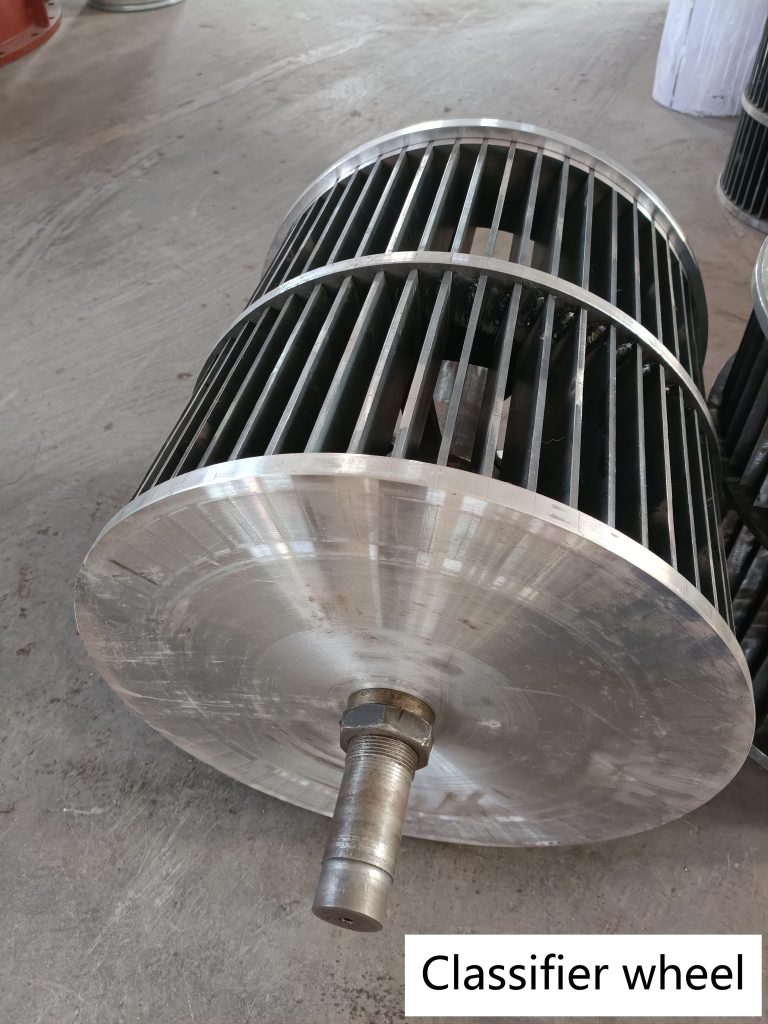
5. Distribución del tamaño de las partículas del alimento
La distribución inicial del tamaño de las partículas del material de partida afecta profundamente la eficiencia de la clasificación. El material de partida más grueso (superior a 40 micrones) suele ser más fácil de clasificar que el material de partida más fino. El material de partida con una distribución definida del tamaño de las partículas puede mejorar la eficiencia de la separación y el rendimiento general.
6. Densidad y forma de las partículas
La densidad y la forma de las partículas afectan la eficiencia de clasificación. Las partículas con mayor densidad pueden requerir un tratamiento diferente en comparación con las partículas de menor densidad. Mientras tanto, la forma irregular puede afectar la resistencia del aire y la dinámica del flujo dentro del molino. La interacción entre la forma de la partícula y el flujo de aire puede afectar la eficiencia de clasificación.
7. Contenido de humedad del pienso
Un alto contenido de humedad en el material de alimentación puede provocar aglomeración y, por lo tanto, reducir la eficiencia. Controlar el contenido de humedad es esencial para mantener un rendimiento óptimo del molino clasificador por aire.
8. Control de temperatura
Las temperaturas de funcionamiento pueden influir en las propiedades de los materiales durante la molienda y la clasificación. Por ejemplo, el aire de refrigeración puede mejorar la capacidad de molienda al evitar el sobrecalentamiento de los materiales sensibles al calor.
Conclusión
En resumen, optimizar el rendimiento de molino clasificador de aire requiere un equilibrio de los factores mencionados anteriormente. Comprender cómo interactúan estos factores permitirá a los operadores lograr los polvos requeridos con alta eficiencia y bajo consumo de energía.
Qingdao Epic Powder Machinery Co., Ltd. es un fabricante especializado en la producción de equipos de procesamiento de polvos. Sus productos incluyen:
– Molino: molino clasificador de aire, molino de bolas, molino de rodillos, molino de chorro, molino de vibración y molino de impacto, etc.
– Clasificador: cuatro series de clasificadores de aire: HTS, ITC, MBS y CTC.
– Modificador: modificador de molino de pasadores, modificador de molino turbo y modificador de tres rodillos, etc.
– Equipo auxiliar: armario de control, colector de polvo y ventilador de succión, etc.
– Los clientes también pueden personalizar según sus necesidades, ““un cliente un diseño”.
Si tiene necesidades o preguntas relevantes sobre el molino clasificador de aire u otros productos, por favor personal de contacto de Epopeya de Qingdao directamente, siempre están a tu servicio.
A continuación se muestran fotografías de molinos clasificadores de aire de Qingdao Epic para molinos clasificadores de aire.
